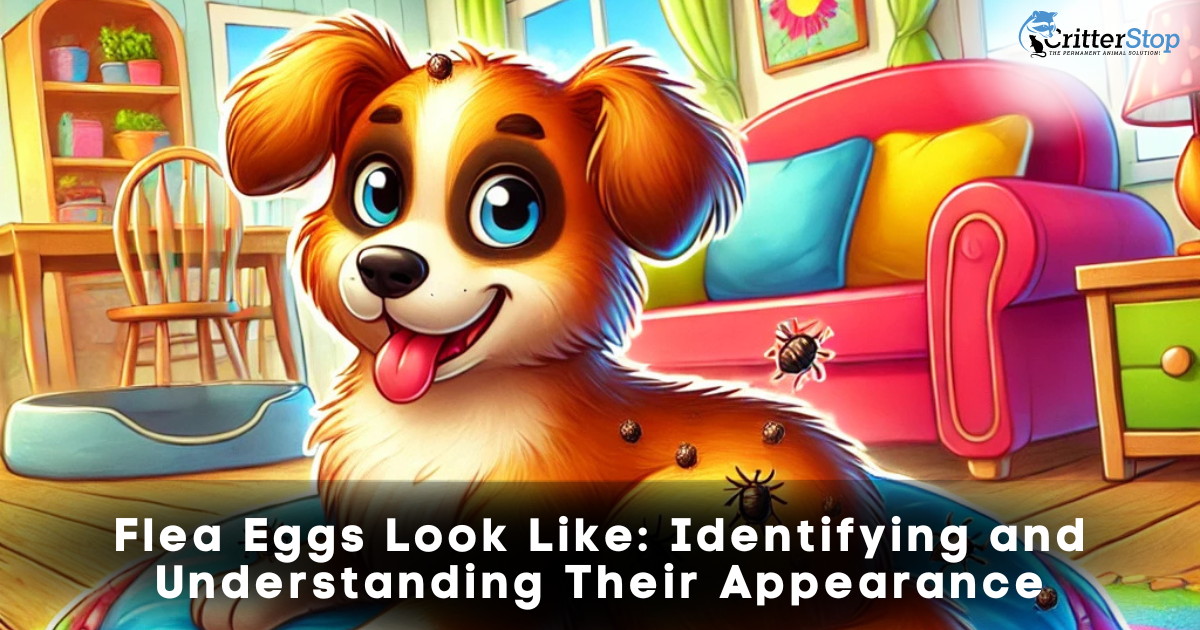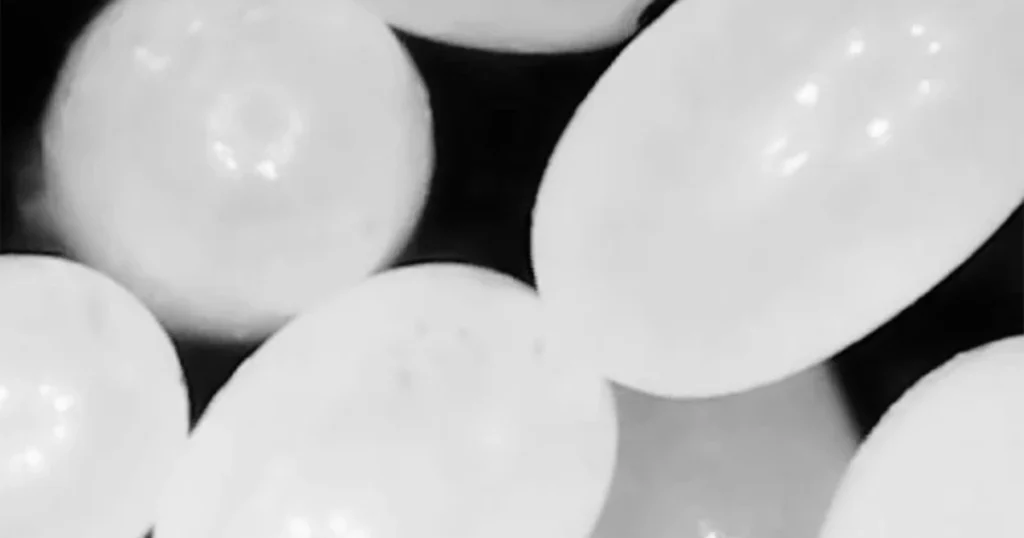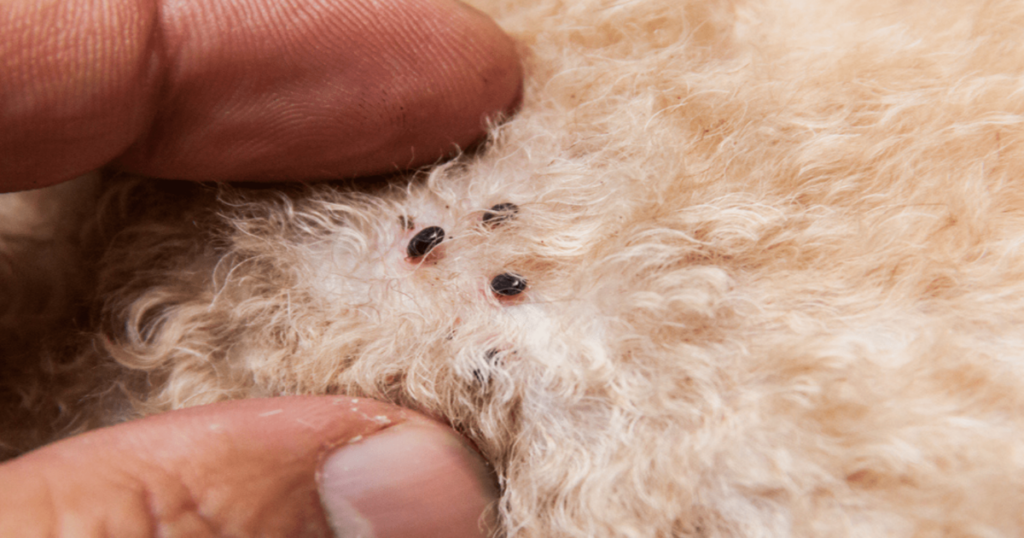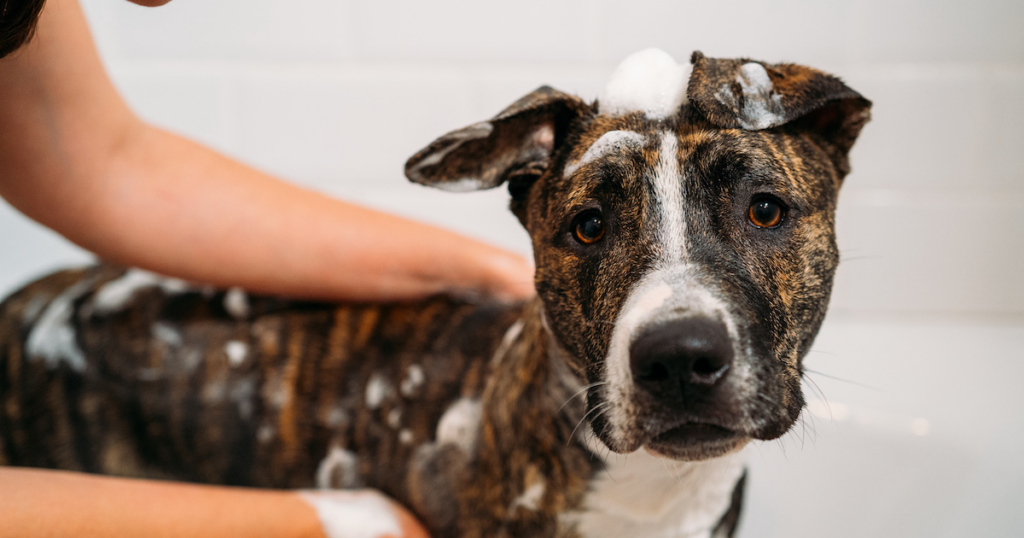
Flea eggs are small, oval-shaped, and difficult to spot with the naked eye. They are usually about 0.5 mm long, white or translucent, which makes them blend seamlessly into their surroundings. Viewing flea egg pictures can help you better understand their appearance and make it easier to identify them in your home. Understanding what flea eggs look like is key to effective pest control.
Understanding how they look can help individuals recognize an infestation early. These eggs often fall off the host animal and can be found where pets frequent, such as bedding, carpets, and upholstery. This information is important for pet owners so they can take preventive measures against these pests.
Once recognized, the next steps involve targeted cleaning and treatment methods. Knowing what flea eggs look like facilitates the identification of infested areas, thereby enhancing the chances of successful eradication.
Flea eggs are small, oval-shaped, and often difficult to see with the naked eye. They typically measure about 0.5 mm in length, making them resemble tiny grains of salt or sugar.
Viewing flea eggs under microscope conditions shows their smooth surface and distinct oval shape, making them easier to identify. This enhanced view allows for more accurate identification and helps with effective pest control since they’re typically white or translucent.
The female flea lays up to 50 eggs each day so this reproduction rate leads to quick infestations.
Once this happens, the eggs detach from the host animal and spread into the surrounding environment, such as carpets, bedding, or cracks in the floor.
Flea larvae emerge from the eggs after about two to three weeks. These larvae are more visible, often looking like tiny, hairy worms. They grow by feeding from organic debris such as the combination of adult flea feces with blood, also known as flea dirt.
Understanding these life stages is crucial for effective flea control. Targeting both eggs and larvae in treatments can significantly reduce flea populations in homes.

Flea eggs have distinct visual traits that make them recognizable. Understanding their color, appearance, and size can help in identifying and managing flea infestations effectively.
Flea eggs are small, oval-shaped, and usually pearl white or off-white with a shiny and smooth surface. Under a certain type of light, they can reflect a faint glow, making them slightly more recognizable on carpets and bedding. Although the idea of flea eggs black might seem logical given the dark appearance of flea dirt, flea eggs are always white, making them stand out in contrast to dirt and debris.
However, flea eggs may sometimes appear black when they mix with flea dirt or other dark debris in their environment. This can give the illusion that the eggs themselves are darker in color, but it is simply due to external materials sticking to them as they fall off the host animal and settle into carpets, bedding, or other areas.
The average flea egg size ranges from 0.5 to 1.0 millimeters in length. Their tiny size complicates seeing them without close inspection. They are generally larger than flea larvae but significantly smaller than adult fleas, which can reach lengths of up to 3 millimeters.
Compared to dust particles, flea eggs are a little larger, allowing them to be more visible when inspected closely. They can easily blend into environments filled with debris, making detection challenging. Identifying their size is crucial for proper management and treatment against flea infestations.

Fleas lifecycle is divided into four stages: egg, larva, pupa, and adult. Understanding this lifecycle is essential for effective control measures.
Flea eggs size is about 0.5mm. They’re oval, white, and very small. They shed from adult fleas, falling around typically in areas where pets frequent. Each female can lay up to 50 eggs per day, leading to rapid population growth.
After 1 to 10 days, eggs hatch into larvae, which are approximately 2-5 mm long. Larvae cannot be seen by the naked eye and primarily feed on organic debris, including flea feces and skin flakes. Viewing flea eggs and larvae pictures can reveal the distinct characteristics of these stages, showing the transformation from egg to larva and helping to track the infestation process.
After several molts, larvae pupate in cocoons, where they can remain dormant for weeks to months. The final stage emerges as adult fleas, ready to continue the cycle by landing on a host where they can reproduce.
Impact on Pets
Flea eggs can significantly affect pets, particularly dogs, leading to discomfort and health issues. Understanding flea eggs dog effects and the implications is essential for effective management.
Flea eggs on dog usually appear as tiny, white specks, resembling grains of salt. They can usually be found where pets spend time, such as bedding, carpets, or upholstery.
When a dog becomes infested, these eggs can lead to irritation as a result of adult fleas coming out from the eggs to start feeding. This can cause scratching, biting, and even infections due to constant irritation.
Most importantly and the reason why it’s crucial to pay attention to this is that flea infestations can cause severe health issues. Some dogs may experience anemia from blood loss, especially if they are highly infested. Flea-borne diseases, including tapeworms or flea allergy dermatitis, are also common concerns.
While identifying flea eggs is important for controlling infestations, recognizing the effects of flea bites is just as crucial. Once flea eggs hatch and mature into adult fleas, they begin biting their host, which can cause itching, redness, and discomfort for both humans and pets. These bites often indicate an ongoing infestation that requires immediate attention. Addressing flea eggs early in their lifecycle can help prevent the irritating and harmful effects of flea bites.
Preventing flea infestations involves a combination of strategies. A flea comb used for grooming can help get rid of flea eggs, fleas, and flea dirt before they have a chance to settle in. Regular use of a flea comb can also serve as an early detection tool, allowing pet owners to catch infestations in their early stages.
Pet owners should also consider using veterinary-approved flea preventatives. Treatments like spot-on solutions, oral medications, and flea collars are available, each designed to disrupt the flea life cycle effectively. Combining the use of a flea comb with these treatments enhances overall flea control by addressing both immediate removal and long-term prevention.
If a flea infestation occurs, thorough cleaning of the home is imperative. Vacuuming carpets, washing bedding, and using insecticides specifically designed for fleas can eliminate eggs and larvae. Consulting a veterinarian for effective treatments is crucial to safeguard the dog's health and comfort.
Flea eggs can cause various problems for humans such as home infestations or direct impact on people. The issue of flea eggs human hair infestation is especially concerning, as it can lead to discomfort and hygiene issues.
Flea eggs are small, often resembling tiny grains of rice. When a flea infests an environment, it can lay hundreds of eggs, which may eventually fall onto surfaces, including human hair.
If these eggs attach to hair, they can become a source of irritation. The hatching fleas may bite, causing skin reactions such as itching and redness. This can lead to discomfort and potential secondary infections from scratching.
Additionally, finding flea eggs in hair can be alarming and may necessitate thorough cleaning and treatment. Individuals might need to apply specialized shampoos or seek a fully licensed and insured pest control company to effectively handle infestations.

The identification of flea eggs can be critical for effective pest control. These eggs are small and can often be mistaken for other debris, making accurate identification essential.
Flea eggs vs dandruff dog comparisons can be helpful when trying to distinguish between the two. Flea eggs and dandruff may appear similar at first glance, but they have distinct characteristics. Flea eggs are oval-shaped and generally white or translucent, measuring about 0.5 mm in length. In contrast, dandruff flakes tend to be larger and irregularly shaped, often yellowish or white with jagged edges.
The difference between what flea eggs look like and dandruff lies in the texture. Flea eggs look smooth and dandruff has a more granular texture. Using a magnifying glass can provide clarity, making it easier to identify and compare the shape and smoothness of flea eggs to dandruff.
There are several effective methods for detecting flea eggs. A popular technique is the use of a fine-toothed comb. Combing through the fur of pets can dislodge flea eggs, allowing them to fall onto a white surface for easy identification.
Another option is to visually inspect areas where pets commonly spend time such as pet beds, rugs, or upholstery. For a more thorough examination, placing a sample under a microscope can confirm the presence of flea eggs, as their oval shape and smooth surface become apparent magnified.
Regularly checking for flea eggs can help in implementing timely control measures. This preventive strategy is essential for keeping the environment clean of fleas.
Flea eggs are sensitive to various environmental conditions. Key factors such as temperature and humidity play critical roles in the development and survival of flea eggs.
Temperature significantly influences flea egg hatching and survival rates. They reproduce better in warmer conditions, commonly between 70°F to 85°F (21°C to 29°C). At temperatures below 65°F (18°C), development slows down, while extreme heat can kill flea eggs.
Humidity levels also impact flea eggs. They require a relative humidity of 50% to 75% for optimal development. In dry conditions, eggs may desiccate, reducing the hatching success rate. On the other hand, an environment with high dampness promotes fungal growth, which can harm flea development.
Understanding these conditions helps in managing flea populations effectively.
Addressing a flea infestation requires a combination of in-home solutions and, if necessary, professional extermination. Each approach targets different stages of the flea lifecycle, including eggs, larvae, and adult fleas.
In-home solutions focus on immediate actions that homeowners can take. Vacuuming is the first step; it helps remove flea larvae, along with their eggs and adult fleas, from carpets, furniture, and flooring. Opt for a strong suction vacuum and get rid of the vacuum bag outside the property as soon as the cleaning is done.
Regularly washing linens and pet bedding in hot water is essential to interrupt the flea egg life cycle.
Flea treatments for pets, such as topical medications or oral pills, should be administered according to the veterinarian's instructions. These treatments kill adult fleas and help prevent further infestations.
Using insect growth regulators (IGRs) can also be effective. IGRs stop flea eggs and larvae from fully developing into adults, breaking the reproductive cycle.
In case of severe infestations, hiring professional exterminations may be needed. Pest control experts employ methods and products that are not available to the general public.
Professionals typically start with a thorough inspection to identify infestation hotspots. This may include carpets, cracks, and hidden areas.
Targeted insecticides are often used as they’re made to eliminate fleas while minimizing risks to pets and humans. These products can penetrate floors and upholstery, reaching fleas at various lifecycle stages.
Follow-up visits are commonly part of a pest control service. Regular checking is necessary to make sure that the treatment worked and addresses any new flea activity before it becomes a larger issue.
In some cases fleas enter the home from outside so professionals might recommend environmental modifications such as treating outdoors and lawns.
Maintaining an environment clean of fleas requires diligence. Implementing regular cleaning routines and ensuring appropriate pet treatment plans makes a big difference in reducing the possibility of flea infestations.
Frequent cleaning is vital in preventing flea eggs and larvae from establishing. It is important to vacuum carpets and upholstery at least once a week. Take a closer look at the spaces where pets spend most of their time, as these spots are prone to flea accumulation.
To enhance effectiveness, consider using a vacuum with a HEPA filter. This type of vacuum captures smaller particles, including flea eggs. Additionally, using hot water to wash pet bedding every two weeks, helps eliminate any entrenched eggs.
Using steam cleaning on carpets can also kill fleas at all life stages, providing further protection. These actions create an environment that is less hospitable to fleas and disrupt their life cycle.
Implementing a comprehensive treatment plan for pets is critical. It includes applying veterinarian-recommended flea prevention products, such as topical options, oral medicine, or flea collars.
Regular veterinary check-ups allow for adjustments in treatment plans based on the pet's needs and conditions. Maintaining a consistent schedule ensures that treatments are effective and prevents flea resurgence.
After applying any treatment, pet owners should monitor their pets for any adverse reactions. It is also essential to treat all pets in the household simultaneously to prevent cross-infestation. This combined approach vastly reduces the possibilty of flea eggs becoming a problem.
If you think you’ve got a flea infestation, Critter Stop is here to help! We are a fully licensed and insured wildlife removal company servicing commercial and residential customers in Texas. As professionals, we know the importance of getting rid of fleas, and we have plenty of experience and equipment to do just that! Contact Us at (214) 234-2616 and schedule your free inspection and estimate today!

Many people have specific questions about flea eggs. Providing answers to these common queries can clarify their appearance, identification, management, and the most effective methods for killing flea eggs in different environments.
Compared to live eggs, dead flea eggs usually look discolored. While live eggs are typically white and smooth, dead eggs may appear yellowish or dull and can be slightly crushed.
Flea eggs are usually white or off-white. Their smooth, oval shape makes them easy to spot against darker surfaces.
Flea dirt resembles black pepper or ground coffee. Unlike eggs, which are white, flea dirt is actually made of consumed blood from fleas and it’s identified by a dark color and coarse texture.
On cats, flea eggs are often found around the base of the tail, hidden in their fur, or lying on their bedding. They can be seen as small, white specks that may fall off when the cat moves.
Immediate treatments include washing bedding in hot water and using well-formulated insect growth regulators. These steps help target and reduce flea eggs effectively.
Fleas typically lay eggs in areas where pets spend time, such as carpets, bedding, and upholstery. They prefer warm, shaded, and undisturbed spots for optimal egg development.
Visit our Critter Library and learn more about our furry friends







